
January 2016
The DuBois Story - Part 1
By Paul Harvey
The DuBois family Coat of Arms
Over two hundred years ago, the
north-central part of Pennsylvania was a vast primal forest occupied by
Native Americans and was also home to deer, bears, wolves, mountain lions, and
other wild creatures. About 1812, a hardy Revolutionary War veteran,
George Shaffer, forged west into the wilderness and chose the present
DuBois area for his homesite. His nearest neighbors were many miles
away. Interestingly, his son Fred deeded the southern part of the
Shaffer tract to a
The next settler to move into the area was John
Rumbarger, who purchased a tract of land there in 1865. Aware of
DuBois' interests, he was still determined to create a community and proceeded to sell lots
and lay out a town. He was successful and, in 1872, the town of
Scrolling back a few centuries, we find
Louis duBois, a French Huguenot, wanting to escape the religious
persecution in his homeland. Born in
Moving ahead five generations, we come to
John DuBois Jr. Born in
Settling in the new rural hamlet bearing his name, John DuBois Jr. started a new and more ambitious career at age 62. He was already wealthy, but he could not rest; there was a vast resource of lumber to be sawed! In 1871, he established the "little mill" on Sandy Lick Creek. Not satisfied with its production, he built the "big mill" in 1874 and a hemlock mill in 1884. At that time, the DuBois-VanTassel tannery was added to use all the hemlock bark. He was now able to produce 20 million board feet of lumber annually, which made his the biggest lumber operation in the state. He built a store and a hotel as shown in Photo 3. The store traded with "DuBois Scrip" notes of five cents to five dollars. His new town certainly prospered and he was the driving force behind it.
John DuBois Jr. passed away on
Because he was a bachelor, the family eagerly
awaited the reading of his will which was drafted by the respected
John Ezekiel Dubois Sr. was born in
Willie, a true southern lady, soon busied herself in her new home in DuBois. Not satisfied with the old Victorian style mansion, she created an English Tudor styled marvel which was noted for its beautiful gardens. Standing at the foot of Monument Hill, it clearly overlooked the Iron Works and the sawmills. It is shown in Photo 6. Sadly, it was razed in the late 1970s.
Interestingly, Willie was not satisfied
with her carriage driver because he could not back up the team and
carriage. Her husband came to the rescue by offering his stable master,
Edwin Mix, to be her driver. She demanded proof, and Mix, an expert
horseman, backed the carriage easily down the serpentine drive of the
mansion! He became Willie's exclusive driver! Edwin's son, Thomas
Hezekiah Mix, was born on Mix Run, in the remote Driftwood,
John E. Sr. continued to expand the town
and his huge lumbering operation. In 1910, the Lumber
Man's Journal stated that the DuBois operation was the biggest in the
world. He was now the Lumber King! Turning to his other ventures, he
completely updated the DuBois Iron Works and, on
John Ezekiel DuBois Jr. followed in his
father's footsteps very well. His picture is shown in Photo 9.
As the great forests had been exhausted, the "big mill" closed and
the lumber business came to an end. In 1940, he is
noted to be the vice president of a gas meter factory. The Iron Works
had been transformed to manufacture Rockwell gas meters. The
magnificent buildings of the Iron Works still exist today as the Sensus
meter plant. Photo 10 and Photo 11 were
recently taken by the author. Note the similarity to Photo 8! John E.
Jr. passed away on
The museum is very fortunate to display
an 18 horsepower DuBois engine. Located in the
Fortunately, I have a small DuBois Iron Works catalog, Bulletin "M" of 1907. It terms the museum engine to be of the "General Service Type." See Photo 15. As noted, they were built in sizes from 5 horsepower to 50 horsepower and used for many diverse purposes. The bulletin also shows a portable model, complete with a water cooling tank, mounted on a four-wheeled, horse-drawn cart. The firm also produced many other designs.
Apparently rare today, the only other
DuBois engine that I have seen is a 5 horsepower model displayed here
many years ago by the late
I would like to acknowledge and thank the following sources from whom I have used information:
DuBois Area Historical Society
Google Books
Newspapers.com
Ancestry.com
"Around
DuBois" book by the DuBois Area Historical Society
Personal Photos and Literature
This article was made possible from the information gleaned from these sources.
Next month, the DuBois Story will continue with detailed information of the various engine models, the designers and patents, and the installations. The mysterious connection with Lazier will be revealed. It promises to be interesting and informative.
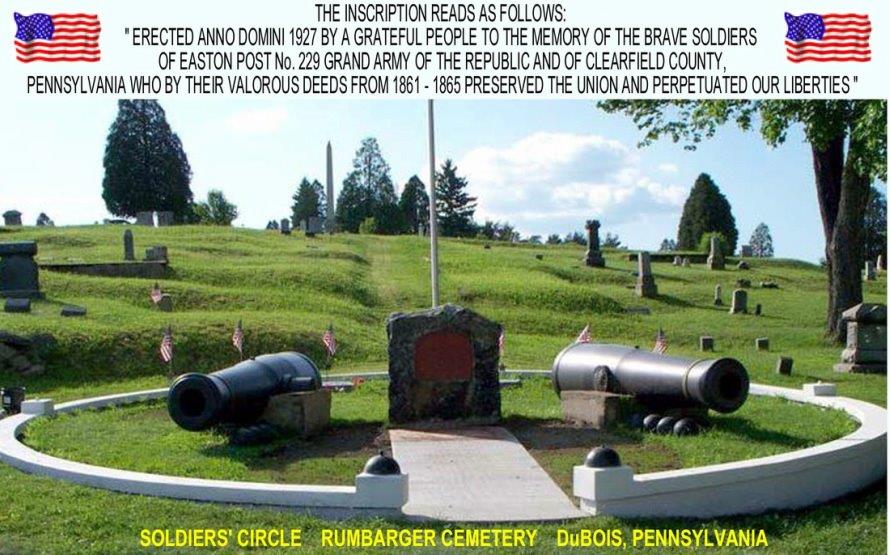
Photo 1: Rumbarger Cemetary
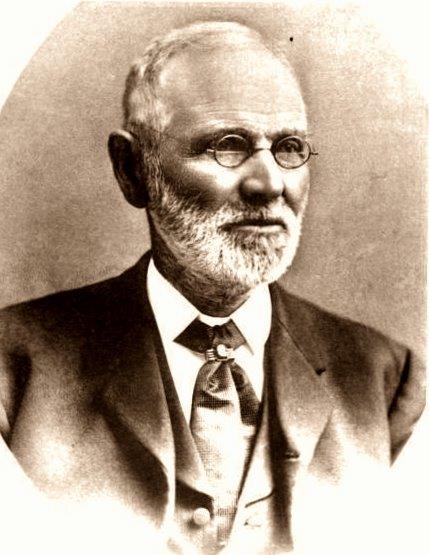
Photo 2: John DuBois Jr.
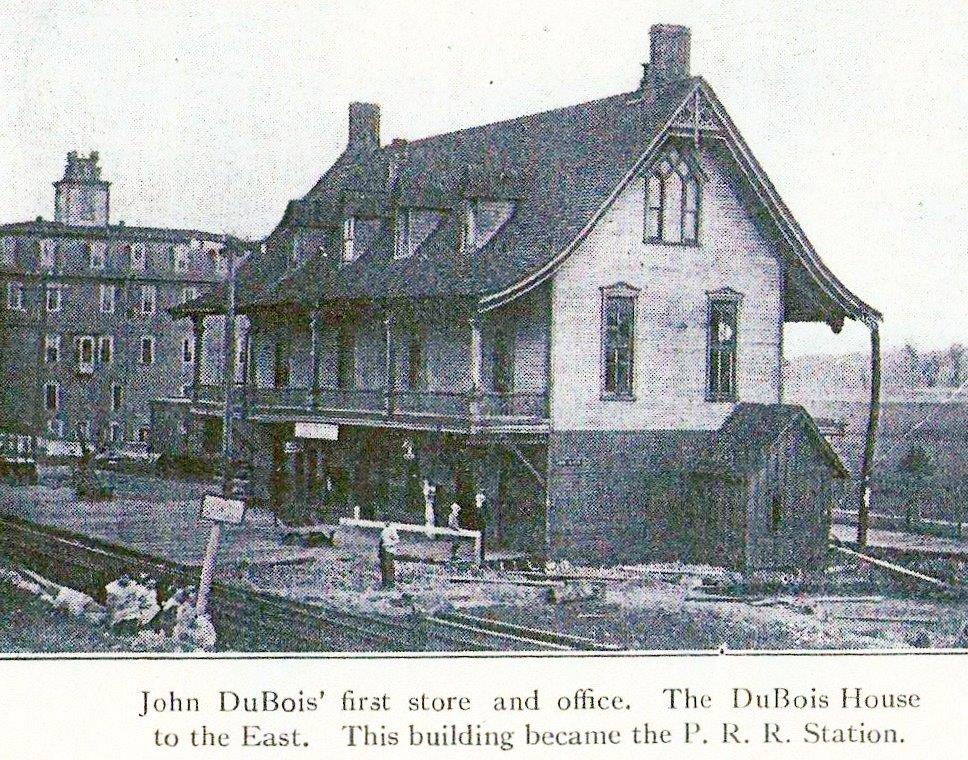
Photo 3: The DuBois Store

Photo 4: Grave of John DuBois Jr.
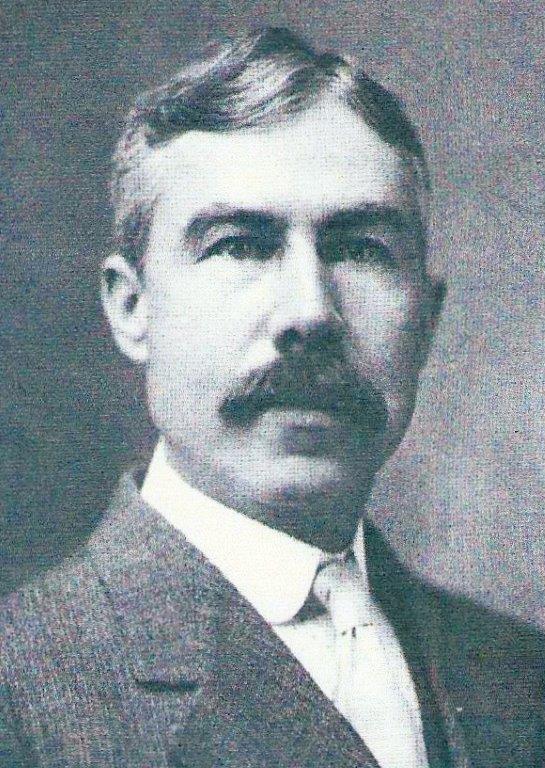
Photo 5: John Ezekiel Dubois Sr.
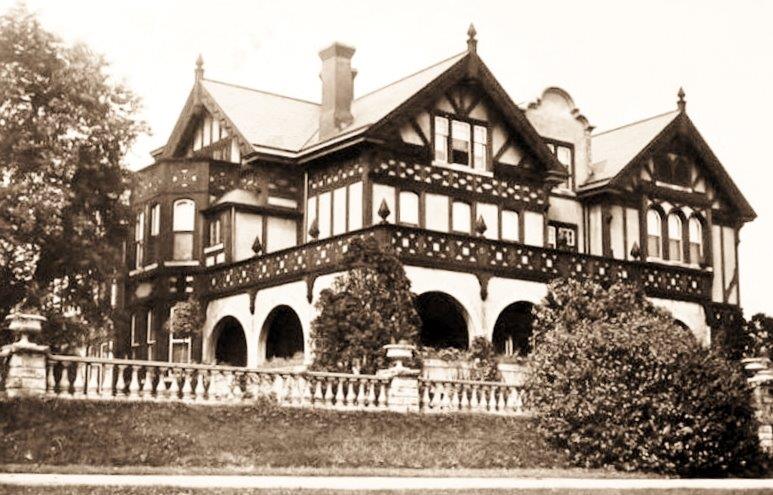
Photo 6: The mansion at Monument Hill
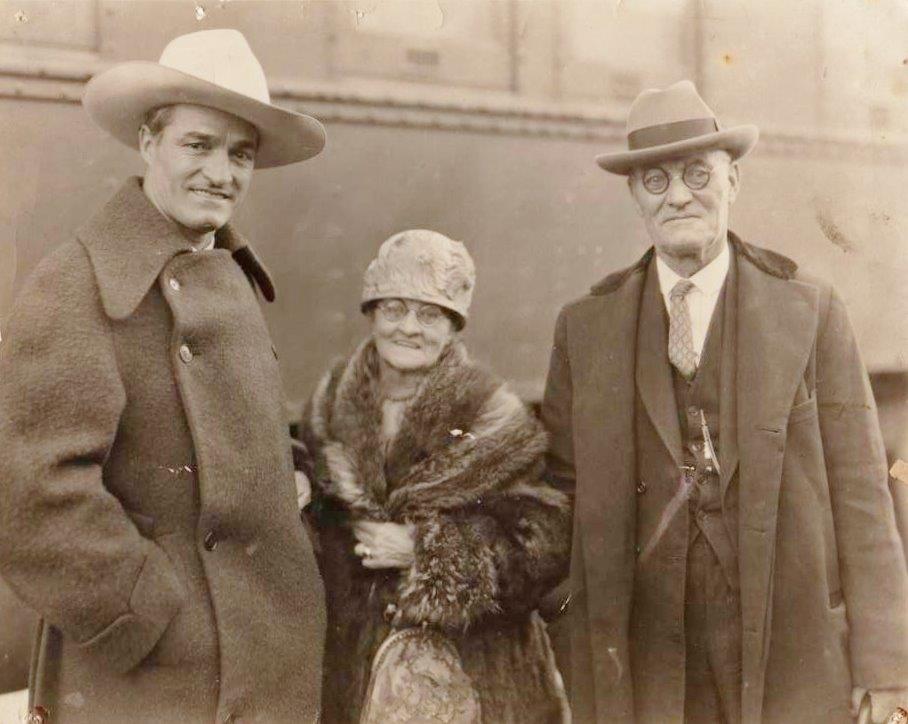
Photo 7: Tom Mix and his parents, Elizabeth and Edwin
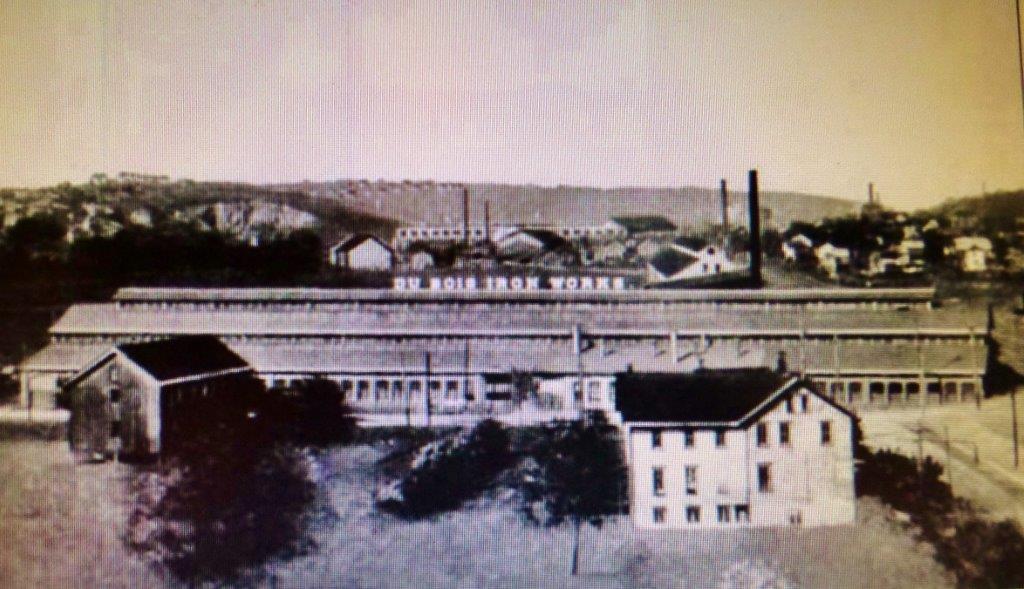
Photo 8: DuBois Iron Works in 1916
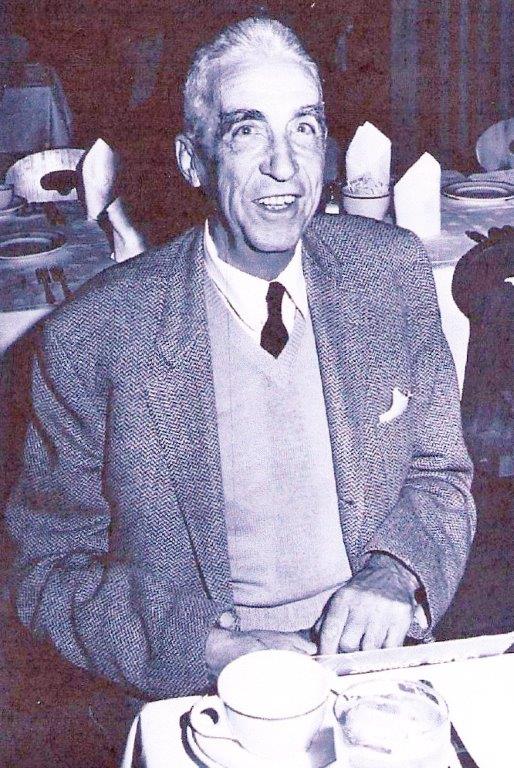
Photo 9: John Ezekiel DuBois Jr.

Photo 10: Former DuBois Iron Works buildings now house the Sensus operation

Photo 11: A second view of the Sensus facility

Photo 12: 18 hp DuBois engine at CPM
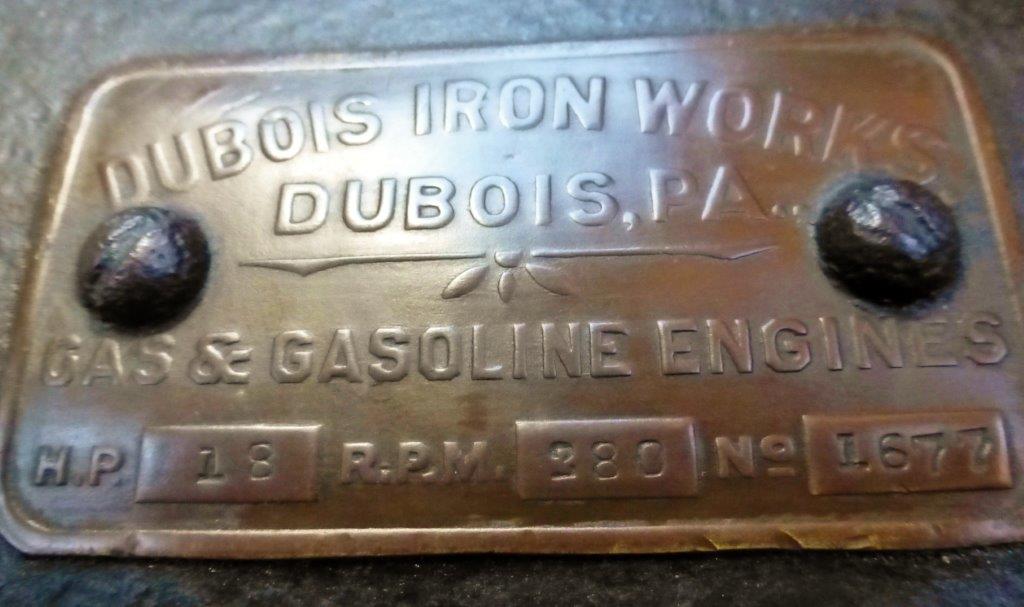
Photo 13: DuBois engine nameplate
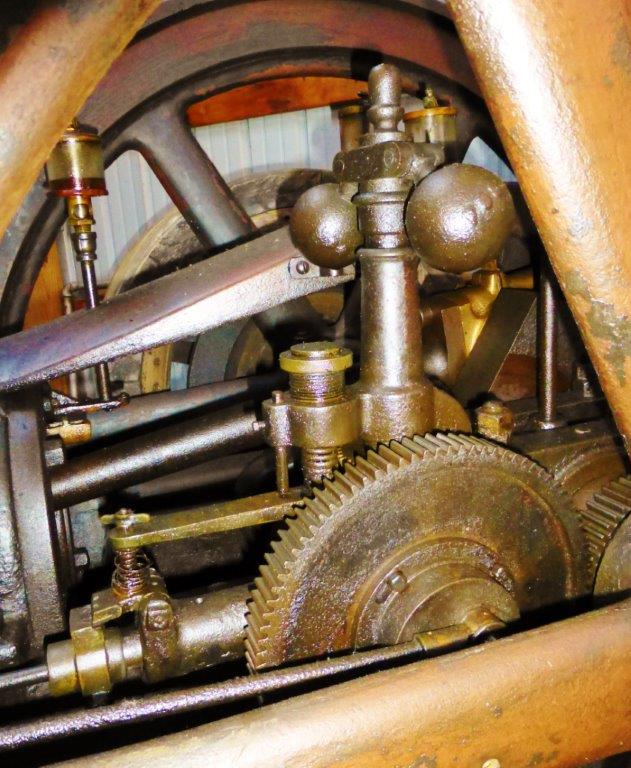
Photo 14: DuBois engine governor
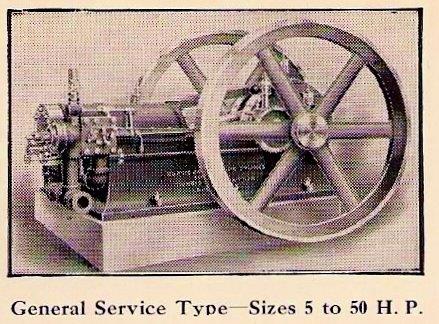
Photo 15: Photo from DuBois Iron Works, Bulletin "M" of 1907
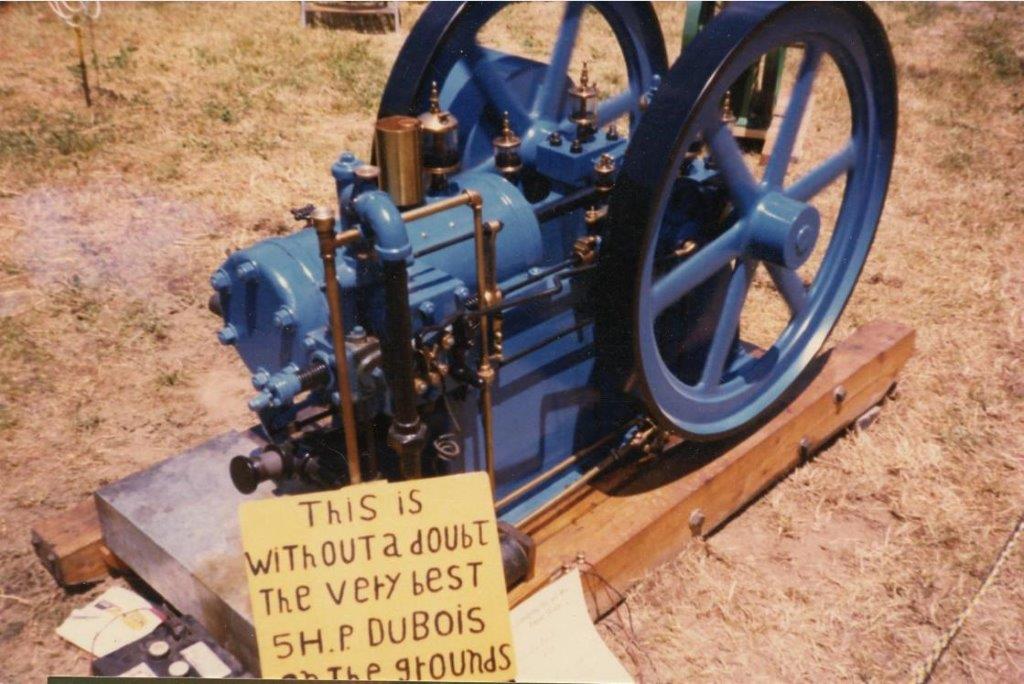
Photo 16: Dale Nickerson's 5 hp DuBois engine